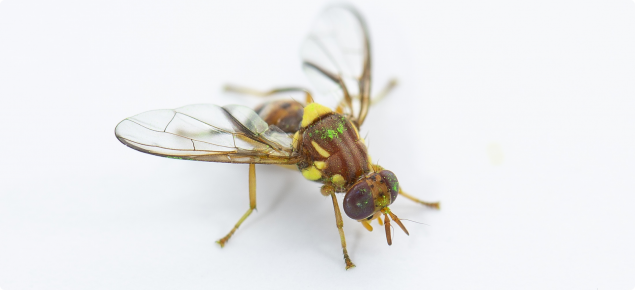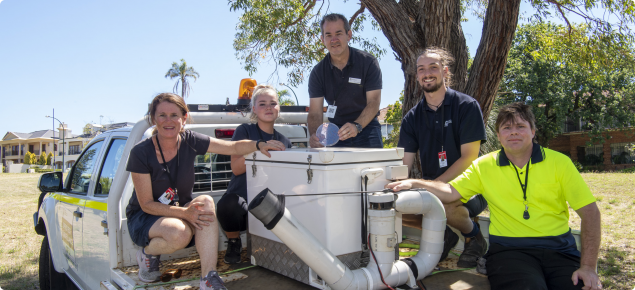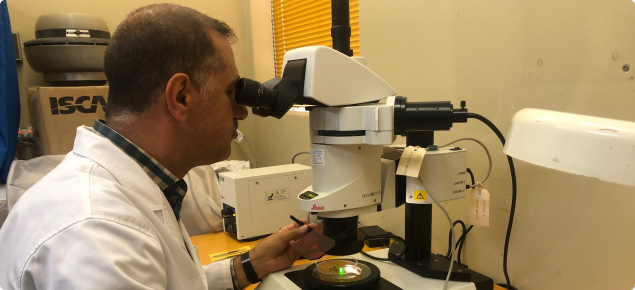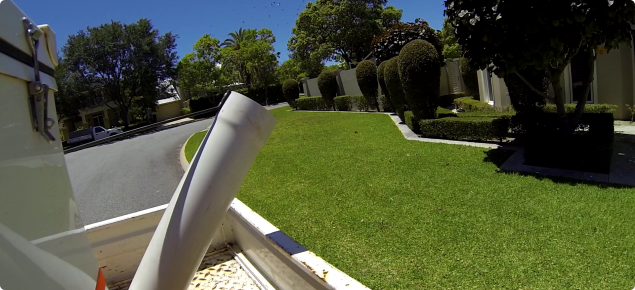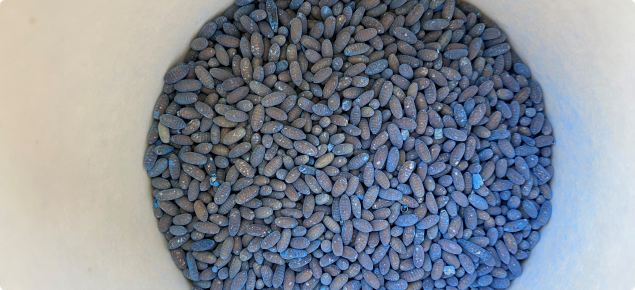How does SIT work?
A key defence in eliminating localised Qfly outbreaks, SIT does not harm beneficial insects or the environment.
Qfly are bred in the state-of-the-art National Sterile Insect Facility SITPlus, located in Port Augusta, South Australia.
Eggs are collected on a larval tray where the eggs hatch into larvae. After maturing into pupae, the pupae are marked with a distinctive coloured dye and sterilised using x-rays. The now sterile pupae are transported to entomologists at DPIRD’s South Perth facility and placed in emergence containers.
As the flies emerge from their pupal case, traces of the coloured dye stick to their bodies in a unique pattern. This is what makes them distinguishable from the wild flies once caught and microscopically examined.
The sterile ‘dye-marked’ adults are released at five days old. Releases take place weekly in the outbreak area at the rate of 3000 flies per hectare.
DPIRD’s permanent grid of surveillance lure traps are used to monitor sterile and wild Qfly numbers.
Specialised Release Vehicle
Sterile flies are released from a specially modified vehicle out on the road marked “Live Sterile fruit fly release In Progress”. A specific release machine has been developed that is attached to the vehicle and slowly driven (approximately 20km/h) on a predetermined route.
Where do I report a Qfly sighting?
It is highly likely that sterile flies will be seen. If possible, take a photo of the fly and report the sighting. Qfly sightings or biosecurity concerns can be reported via the MyPestGuideTM Report app or website. Alternatively, you can contact DPIRD’s Pest and Disease Information Service (PaDIS) on (08) 9368 3080 or padis@dpird.wa.gov.au.

